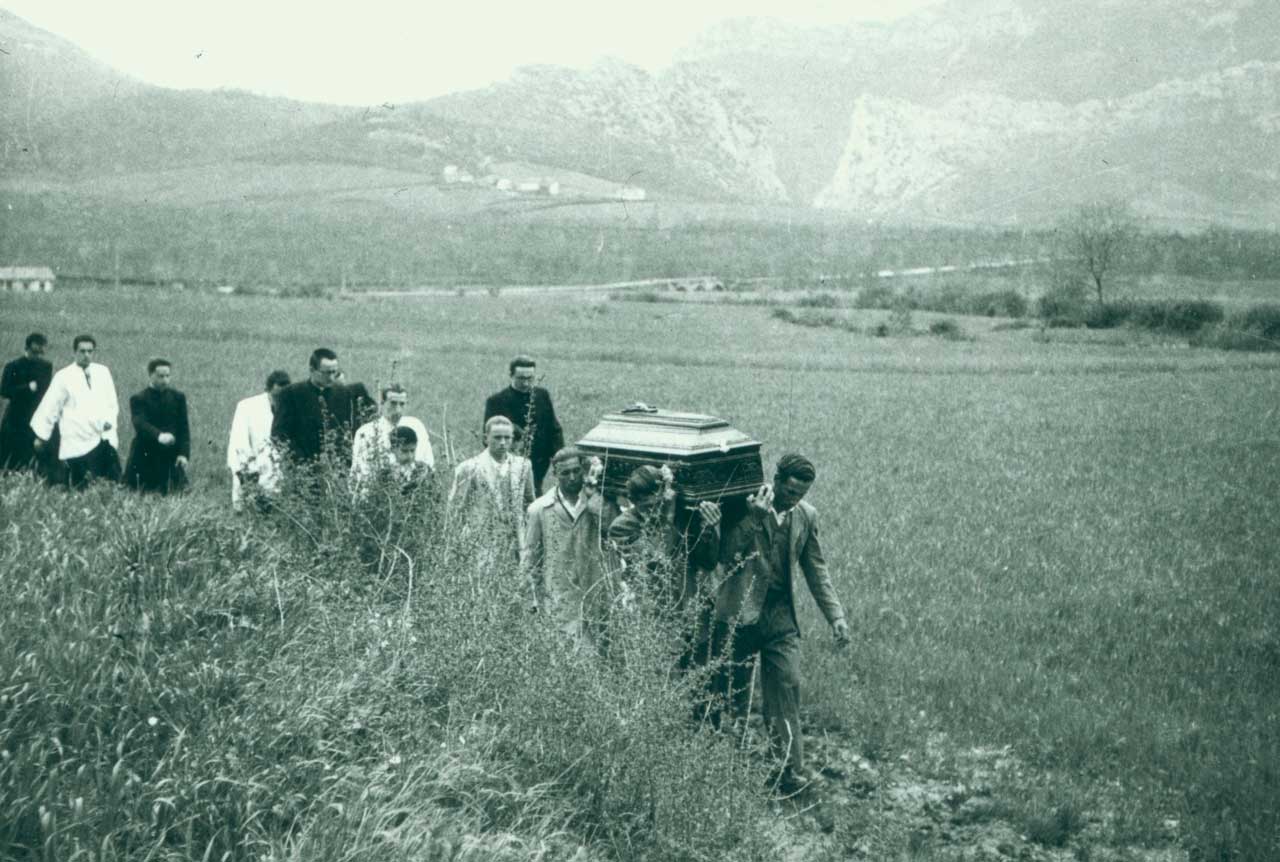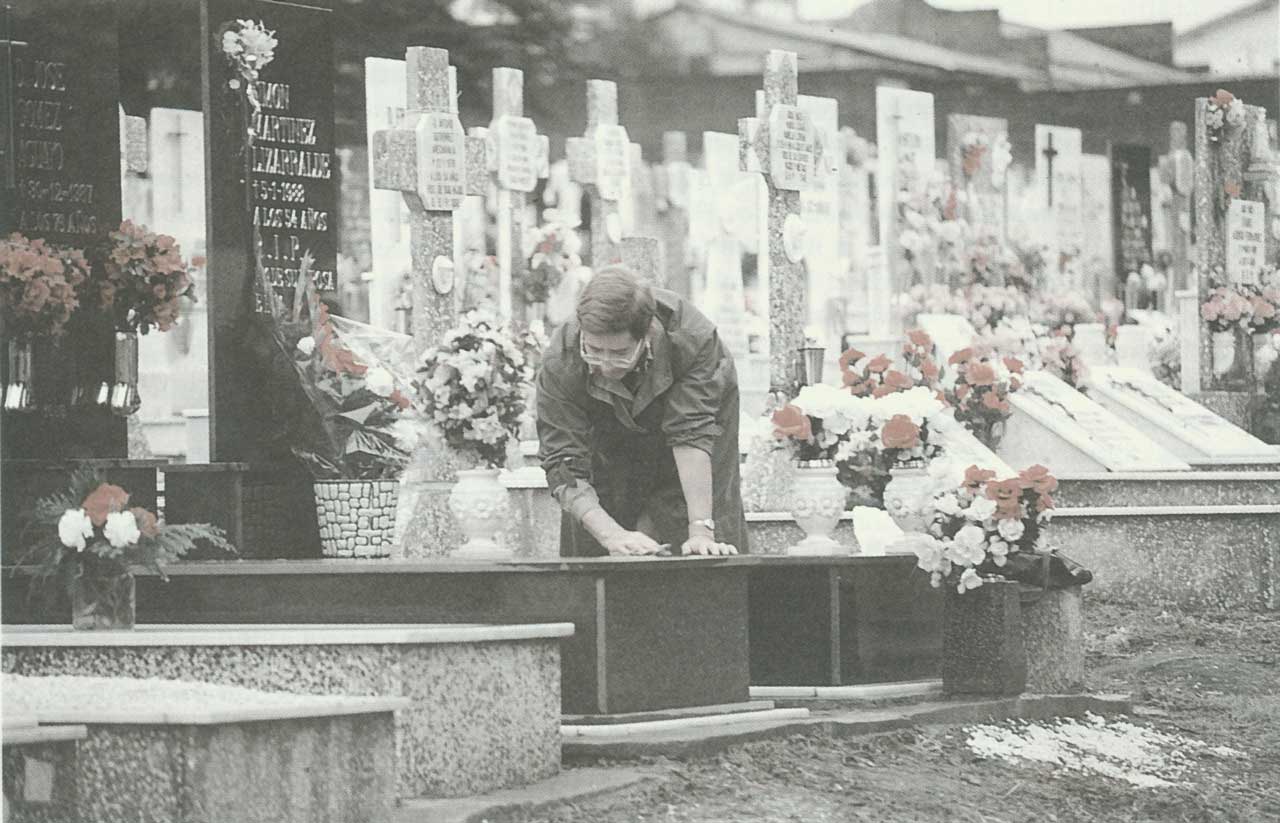Diferencia entre revisiones de «Ritos funerarios en vasconia/en»
De Atlas Etnográfico de Vasconia
(Página creada con «====[/atlas/ritos/Toque-de-campana-anunciando-la-muerte-Beasain.jpg|Death knell. Beasain (G). Source: José Zufiaurre, Etniker Euskalerria Groups.|Tolling the bell was a ve...») |
(Página creada con «====[/atlas/ritos/Cortejo-funebre-1925.jpg|Funeral cortège, c. 1925. Source: Antxon Aguirre, Etniker Euskalerria Groups.|There were specific paths to carry the corpse from...») |
||
| Línea 24: | Línea 24: | ||
====[/atlas/ritos/Toque-de-campana-anunciando-la-muerte-Beasain.jpg|Death knell. Beasain (G). Source: José Zufiaurre, Etniker Euskalerria Groups.|Tolling the bell was a very effective way of announcing the death in rural settlements.||]==== | ====[/atlas/ritos/Toque-de-campana-anunciando-la-muerte-Beasain.jpg|Death knell. Beasain (G). Source: José Zufiaurre, Etniker Euskalerria Groups.|Tolling the bell was a very effective way of announcing the death in rural settlements.||]==== | ||
| − | ====[/atlas/ritos/Cortejo-funebre-1925.jpg| | + | ====[/atlas/ritos/Cortejo-funebre-1925.jpg|Funeral cortège, c. 1925. Source: Antxon Aguirre, Etniker Euskalerria Groups.|There were specific paths to carry the corpse from the house of the deceased to the church and the cemetery.||]==== |
====[/atlas/ritos/Mujeres-con-ofrendas-Otxagabia-1920.jpg|Mujeres con ofrendas. Otsagabia (N), c. 1920. Fuente: Archivo particular Fco. Javier Zubiaur y M.ª Amor Beguiristain: Foto Roldán y Foto Calle.|Fue común que los participantes en el cortejo fúnebre, tanto familiares del difunto como vecinos, llevaran ofrendas de pan y de luz.||]==== | ====[/atlas/ritos/Mujeres-con-ofrendas-Otxagabia-1920.jpg|Mujeres con ofrendas. Otsagabia (N), c. 1920. Fuente: Archivo particular Fco. Javier Zubiaur y M.ª Amor Beguiristain: Foto Roldán y Foto Calle.|Fue común que los participantes en el cortejo fúnebre, tanto familiares del difunto como vecinos, llevaran ofrendas de pan y de luz.||]==== | ||
Revisión del 09:09 25 feb 2020

Funeral Rites in the Basque Country
Cultural issues surrounding death as a rite of passage, including death omens, death throes and ritual practices after death.
On the way to the cemetery, c. 1950. Izurdiaga (N). Source: Carmen Jusué, Etniker Euskalerria Groups.



_1995.jpg/1200px-7.86_Salida_de_la_casa_mortuoria._Bera_(N)_1995.jpg)
.jpg/1200px-7.33_La_muerte_del_justo._Litografia_belga_del_s._XIX_procedente_de_un_caserio_de_Ibarruri_(B).jpg)
._(Representacion).jpg/1200px-7.84_Conduccion_del_cadaver_por_el_camino_mortuorio_gorpuzbidea._Orexa_(G)._(Representacion).jpg)
.jpg/1068px-7.259_Antiguo_cementerio_de_Jatsu_(L).jpg)
